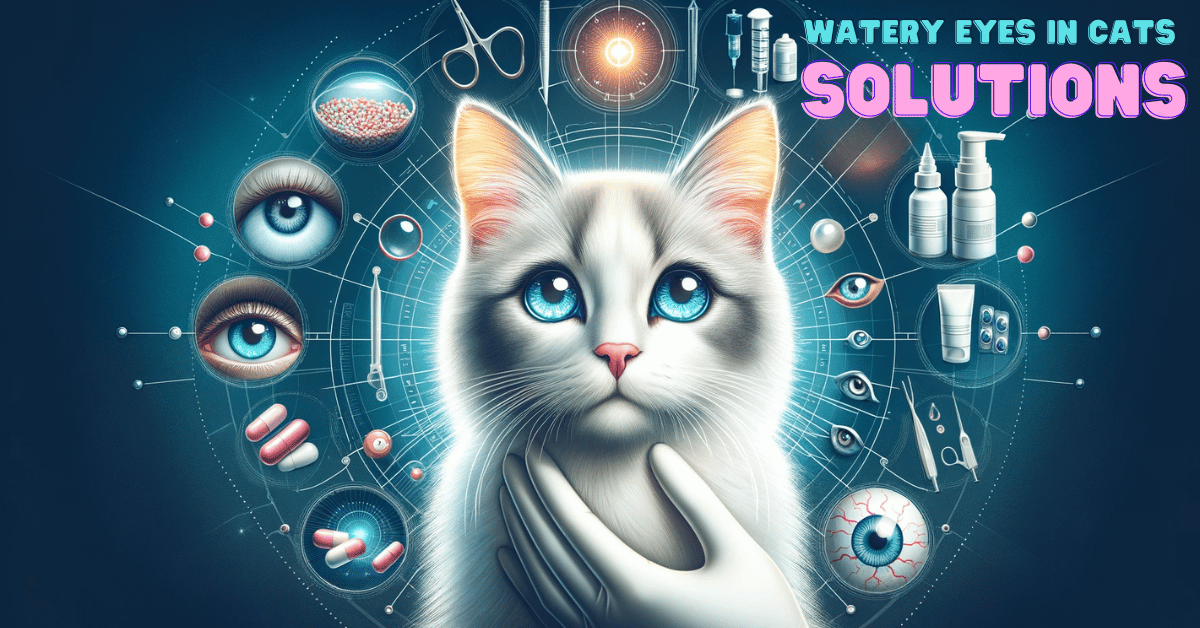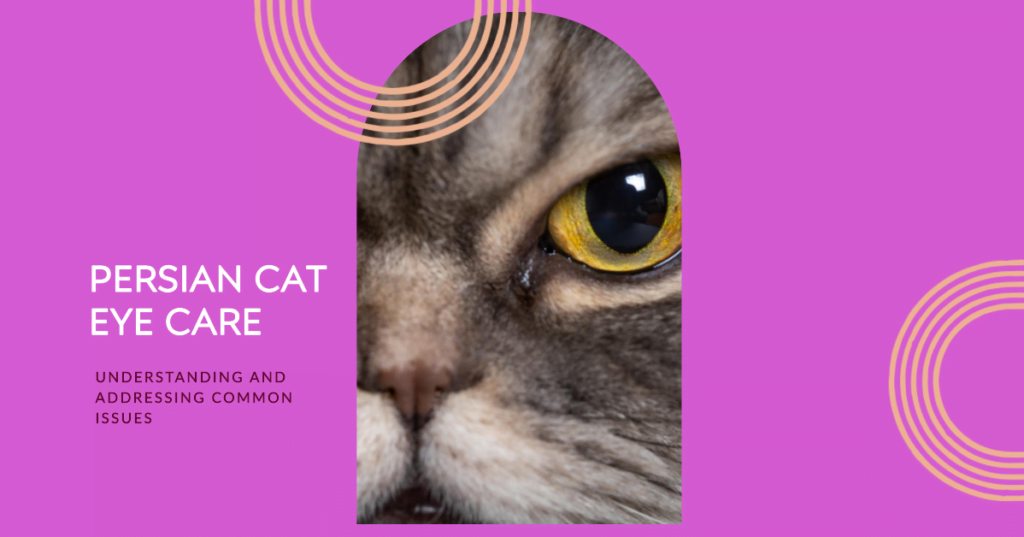This post contains affiliate links and I will be compensated if you make a purchase after clicking on my links.
Cats and Cascades: Demystifying Watery Eyes in Cats
Just like your smartphone might blink with notifications, your cat’s eyes are their own intricate system, flashing signals that they need attention. Among these signals are watery eyes, a common but often misunderstood condition.
In the feline world, tears aren’t just for the emotional finale of a sad movie. They’re an essential part of your cat’s optical health, keeping their peepers pristine and functioning like well-oiled lenses. But what happens when this tear system goes haywire?
Quick Guide: Assessing Watery Eyes in Cats – When to Worry
| Condition | Concern Level | Advice |
|---|---|---|
| Mild Tear Discharge 💧 | Low | Monitor and maintain a clean environment. |
| Persistent Tearing with Discharge 🌧️ | Medium | Vet visit recommended. |
| Redness and Swelling 🔴 | High | Seek immediate veterinary care. |
| Behavioral Changes 🚨 | Medium to High | Check for discomfort, consult a vet. |
| Clear Tearing in Flat-Faced Breeds 😺 | Variable | Regular cleaning, vet checks advised. |
Feline Tear Production and Drainage Explained
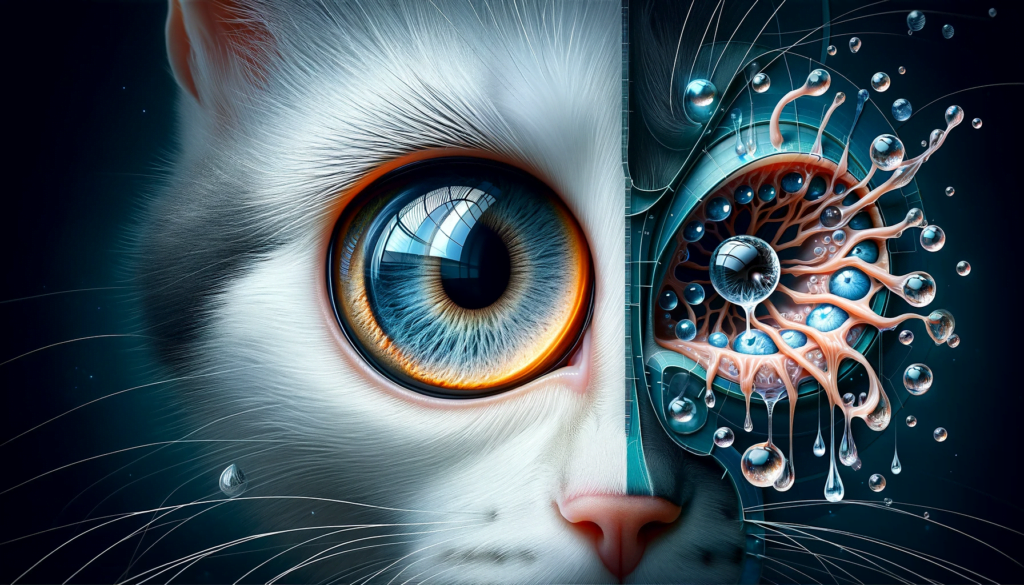
In the perfect feline world, tears are like the unsung maintenance crew, constantly working to protect the eye and keep the surface moist and clear from any dust or debris – your cat’s natural defense against the world’s irritants.
However, like any sophisticated system, there’s a fine line between just enough and too much. Excessive tearing, or “epiphora” in the cat world, is like an overflow alert – it’s your cue that something’s up.
It could be a minor glitch, like a speck of dust, or something more concerning, like an infection or a structural problem in the tear drainage apparatus. On the flip side, impaired drainage is like a blocked filter, where tears can’t escape the way they’re supposed to, leading to those sorrowful, wet-eye looks.
Potential Causes of Weepy Eyes
As we zoom in on our feline friends’ teary troubles, let’s decode the usual suspects behind those weepy windows. Think of your cat’s eyes as delicate sensors, finely tuned to the environment but vulnerable to a range of glitches.
- Eye Infections: Infections can range from being a minor nuisance to causing a major disruption in their visual health, leading to discomfort and potentially serious complications.
- Trauma: Trauma to a cat’s eye, such as a scratch or a bump, can cause significant damage. It’s important to treat these injuries seriously as they can affect your cat’s vision and overall eye health.
- Debris: Foreign objects in your cat’s eye, like dust or small particles, can cause irritation and lead to excessive tearing. These are natural responses of the eye trying to remove these irritants.
- Allergies: Similar to humans, cats can suffer from allergies that affect their eyes. Common allergens like pollen, dust, or certain scents can cause their eyes to become itchy and watery.
- Lumps and Bumps: Growths or swellings around the eyes, whether harmless or serious, can cause discomfort and affect tear drainage. These should be evaluated by a veterinarian to determine the appropriate course of action.
- Breed-related Issues: Certain cat breeds, particularly those with flat faces like Persians, are predisposed to watery eyes. This is often due to their unique facial structure and the different anatomy of the Persian cat eyes affecting tear drainage.
Symptoms to Watch Out For
Now that we’ve identified the potential troublemakers, let’s talk about the warning signs. Much like the flashing indicators on your dashboard, these symptoms signal it’s time to troubleshoot:
- Redness: Redness in your cat’s eyes is a clear indicator that something may be amiss. It’s a visible sign that should prompt a closer look to understand the underlying issue.
- Discharge: Discharge can vary from clear to pus-like and is a significant indicator of eye health. If you notice any unusual discharge from your cat’s eyes, it’s a signal that they might need a veterinary check-up.
- Frequent Blinking: If your cat is blinking more than usual, it’s a sign they might be experiencing discomfort or trying to clear something from their eye. It’s one of the ways they communicate that their eyes need attention.
- Emergency Signs: Certain symptoms like green or yellow discharge, squinting, or obvious signs of pain are urgent. These symptoms require immediate veterinary attention as they can indicate a serious eye condition.
Diagnosis and Tech Tools Used
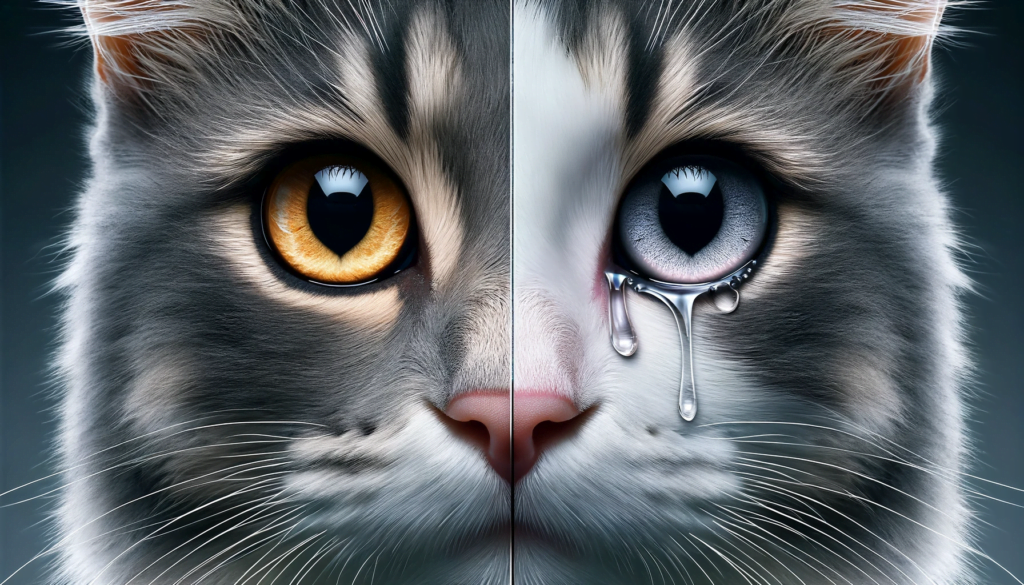
Modern veterinary medicine has made significant strides in diagnosing feline eye issues, thanks in part to advanced technology. Veterinarians now use a variety of high-tech tools that provide detailed insights into your cat’s eye health. These can include digital imaging techniques like slit-lamp biomicroscopy and ocular ultrasonography, which allow for a closer look at the eye’s structure and function.
Additionally, tonometry can be used to measure intraocular pressure, crucial for diagnosing conditions like glaucoma. These sophisticated tools enable accurate diagnosis and help in formulating an effective treatment plan.
Treatment Approaches For Watery Eyes in Cats
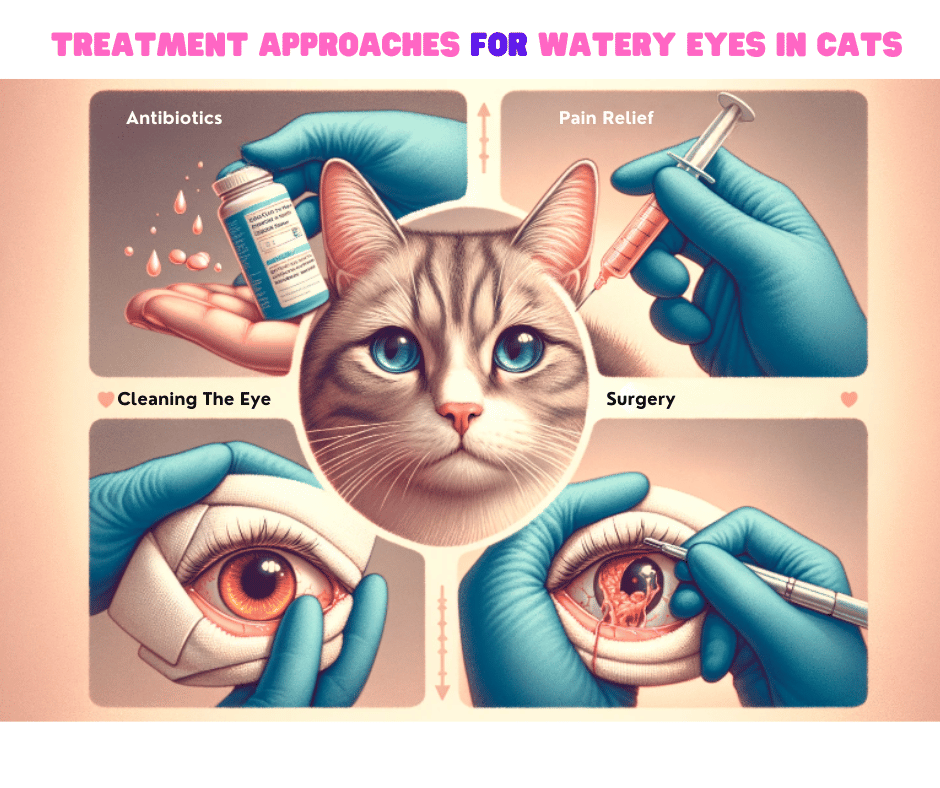
- Antibiotics: When it comes to infections, antibiotics are the front line of defense. They are used not only to treat active infections but also as a preventative measure following surgeries or injuries to the eye.
- Pain Relief: Managing pain is crucial for your cat’s comfort and recovery. Pain relief medications are often prescribed alongside other treatments to ensure your cat remains comfortable and stress-free during their recovery.
- Flushing/Cleaning the Eye: Regular flushing or cleaning of the eye can be necessary in cases of infection or when foreign bodies are present. This helps in clearing out any debris and reducing the risk of further irritation or infection.
- Surgery: In more severe cases, such as deep corneal ulcers or significant structural problems, surgery may be required. Surgical interventions can range from minor procedures to correct tear drainage issues to more complex operations for serious conditions. The benefits of surgery often outweigh the risks, providing a long-term solution to certain eye problems.
Home Care and Precautions
- Gentle Cleaning: For minor irritations or as part of regular grooming, gently cleaning your cat’s eyes can be beneficial. Use cool boiled water and a clean, soft cloth or cotton ball to gently wipe away any discharge. It’s important to be gentle and cautious not to irritate the eyes further. Also, don’t use the same pad for both eyes, especially if there’s a possibility of infection, as this could inadvertently spread it from one eye to the other.
- Use Specialized Cleaning Solutions: In situations where eye discharge is more severe, consider using specialized cleaning solutions designed for cats. These solutions are often more effective in thoroughly cleaning the eye area and can provide additional relief for your cat. However, it’s crucial to choose products that are safe such as Eye Envy Products and specifically formulated for feline use.
- Preventive Measures: Additionally, keeping your cat’s living environment safe and clean, and being mindful of potential irritants, can help in preventing eye issues.
Important: It’s essential to seek professional veterinary care if you notice any persistent symptoms or changes in your cat’s eye health. Early intervention can prevent more serious complications and ensure your cat receives the appropriate treatment.
Testimonials on Managing Watery Eyes in Cats
To bring our discussion to life, let’s delve into some real-life stories from cat owners who have navigated the journey of dealing with watery eyes in their feline companions.
Real Life Example 1: Oliver, a playful tabby, suddenly developed red, watery eyes after an outdoor adventure. His owner quickly sought veterinary help, where an ocular examination revealed a small foreign body in his eye. Thanks to the precision of modern veterinary tools, the debris was safely removed, and with the help of antibiotics and pain relief medication, Oliver was back to his mischievous self in no time.
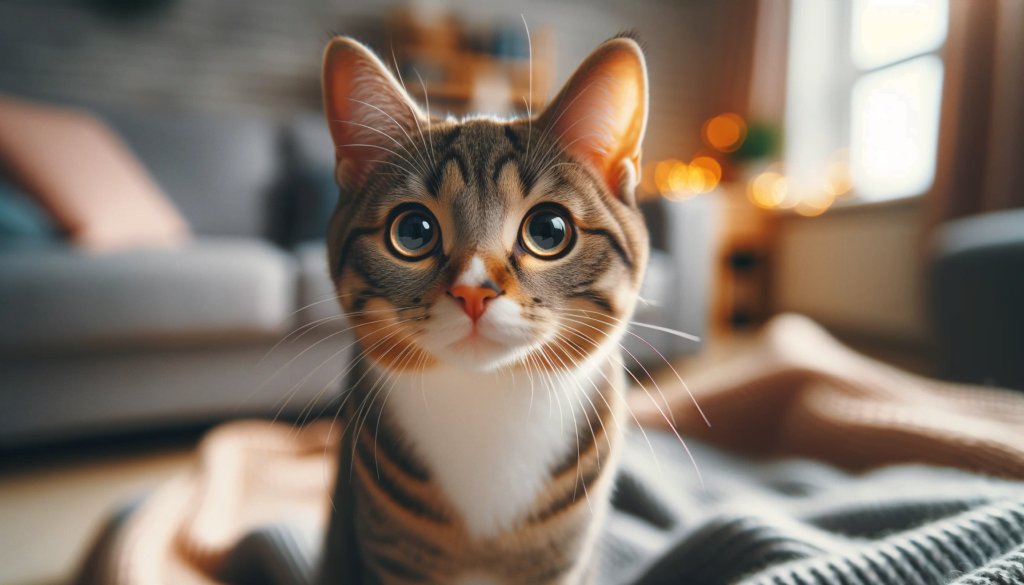
Real Life Example 2: Luna, a Persian cat who struggled with chronic weepy eyes due to her breed-specific facial structure. After a thorough evaluation using digital imaging, Luna underwent a minor surgical procedure to correct her tear duct issues. Post-surgery, with a combination of gentle home care and regular vet check-ups, Luna’s eyes are now as clear as her playful spirit.
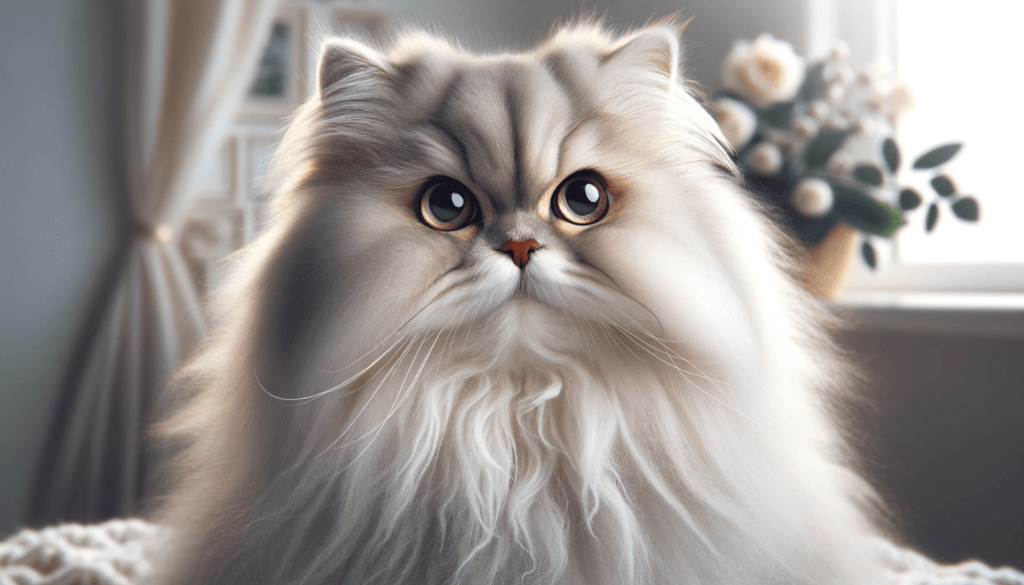
Clear Vision Ahead: Tackling Watery Eyes in Cats with Confidence
Our deep dive into the world of watery eyes in cats has shed light on the importance of understanding this common feline issue. Remember, staying alert to symptoms like redness and unusual discharge is key.
Embrace the role of modern veterinary technology and treatments in safeguarding your cat’s eye health. And never underestimate the power of regular home care and vet visits in preventing and managing these issues.
Meet Sean, a fintech whiz with a penchant for pet purrs and blockchain buzz. After a decade of fintech feats, Sean’s tech talents leaped from ledger lines to litter lines, driven by a passion for pets and a vision for a more connected pet care community. With three critter companions as co-pilots, Sean launched this blog to share a treasury of pet-friendly tech tips and tales.

